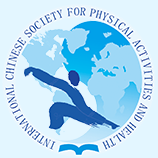Document Type
Abstract
Keywords
college students, rock climber, sports injury, risk factor
Publication Date
2-2024
Abstract
Purpose: Originating from mountaineering, rock climbing has encountered fresh opportunities for growth since its inclusion in the Olympics, and there is a growing awareness of the associated injury risks. Methods: Using questionnaire survey and mathematical statistics methods, this paper studied the epidemiological characteristics of sports injuries among Chinese college rock-climbing athletes by 6 Chinese university rock-climbing teams. Results: The incidence of sports injury was as high as 87.10%, and the annual incidence of injury was 3.39 times/year. The number of injuries was mainly 1 time (43.55%), and the number of injuries was less in 4 (8.06%;) or 5 times (1.61%). A total of 105 injuries occurred, involving 107 body parts. Finger injuries were the most frequent, 30 times (28.04%), and followed by knee joint 12 times (11.21%). The most common injuries were abrasions (39.25%) followed by strains (26.17%) and impact injuries (13.08%). The incidence of acute injury was much higher than that of chronic injury, with 73 acute injuries (69.52%) and 32 chronic injuries (30.48%). UIAA1 injury was the most, 93 times (88.57%), followed by UIAA2 injury 10 times (9.52%). UIAA3 injury was once (0.95%). The most injuries occurred during training with 88 times (83.81%), followed by 11 times in competition (10.48%) and 6 times in other times (5.71%). Rock climbing events had the most injuries with 53 times (50.48%), followed by 32 times (30.48%), speed 15 times (14.29%) and other 5 times (4.76%). The factors influencing the occurrence of injury include risk factors and inducing events. The most important risk factors were the awareness of injury protection (P < 0.05), sufficient preparation activities (P < 0.05), wearing professional climbing shoes (P < 0.05), and qualified protectors (P < 0.05). Insufficient warm-up (n=41; 26.28%), the athlete's own technical movement error (n=35; 22.44%), excessive exercise load (n=25; 16.03%) were the most major injury-inducing event. Conclusion: Chinese college rock climbers face a high incidence of injuries, affecting various body sites and manifesting in numerous injury types. The injuries tend to be of a relatively mild degree, and the risk factors are complex and variable. It is crucial for the Chinese community to approach rock climbing injuries with reason, diligently avoid associated risk factors, enhance support for rock climbing injury research, and foster the healthy and rapid development of rock climbing among Chinese college students.
DOI
https://doi.org/10.18122/ijpah.3.1.23.boisestate
Recommended Citation
Tian, Bingbing and Gu, Dehong
(2024)
"A79: Epidemiology of Athletic Injuries in China College Rock Climbing Athlete,"
International Journal of Physical Activity and Health: Vol. 3:
Iss.
1, Article 23.
DOI: https://doi.org/10.18122/ijpah.3.1.23.boisestate
Available at:
https://scholarworks.boisestate.edu/ijpah/vol3/iss1/23
Included in
Exercise Science Commons, Health and Physical Education Commons, Public Health Commons, Sports Studies Commons



